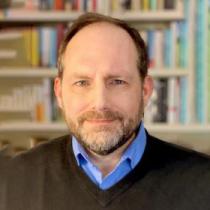-
About
Explore
-
Undergraduate
ExploreUp a level (this gets replaced in JS)
-
Getting Started
Explore
-
Future and Current Students
Explore
-
Get Connected
Explore
-
Get Involved
Explore
-
Diversity and Inclusion
Explore
-
Academic Advising
Explore
- Visit and Apply
- Student Profiles
- Donate
-
Getting Started
-
Graduate
Explore
-
Research
Explore
-
Alumni
ExploreUp a level (this gets replaced in JS)
-
Get Involved
Explore
-
Achievements
Explore
- Contact
- KINES News
- Donate to KINES
- Update Your Contact Information
-
Get Involved
-
Outreach & Service
Explore
-
Contact
Explore
-
Departments
Explore
-
Research Centers
Explore
-
Central Administration
Explore
-
Training and Support
Explore
- Contacts/Directory
How does childhood exercise affect adult levels of physical activity?
Purpose
How much we exercise as children and adolescents is related to how active we are later in life, but is this simply the development of good habits, or is it something more?

This research investigates how physical activity during childhood affects the development of musculoskeletal structures and physiological function in ways that could impact how readily adults perform physical activity. Because controlling and measuring activity throughout childhood is impossible in humans, the team will study bone and muscle structure, walking function, and adult activity levels in birds and mice that participated in varying levels of activity during their development.
The results may help identify the timing and amount of exercise during childhood most important for developing into a healthy, active adult.
The researchers are also studying whether starting exercise as an adult can reverse changes to the body that occurred due to childhood inactivity.

We are interested in understanding how late is too late for adopting physical activity behavior. Is it important to begin exercising very early in childhood, or can one start exercising late in adolescence and still avoid ill effects?
Stephen Piazza, professor of kinesiology
Impact
Adults who are physically inactive are at risk for many health problems including obesity, heart disease, high blood pressure, diabetes, cancer, and more. Regular physical activity reduces the risk for all these problems, helps protect against chronic disease, and improves sleep, mood, and memory.
This project seeks to build health throughout life by identifying when childhood physical activity is most important.
Investigators
Co-investigators: Jonas Rubenson, Stephen Piazza
Graduate students: Roberto Castro
Post-doctoral scholar: Derek Jurestovsky
Collaborators
Timothy Ryan, professor of anthropology at Penn State
Natalie Holt, assistant professor of evolution, ecology, and organismal biology at University of California Riverside
Sponsor
This research is funded by a grant from the National Institute of Arthritis and Musculoskeletal and Skin Diseases.
